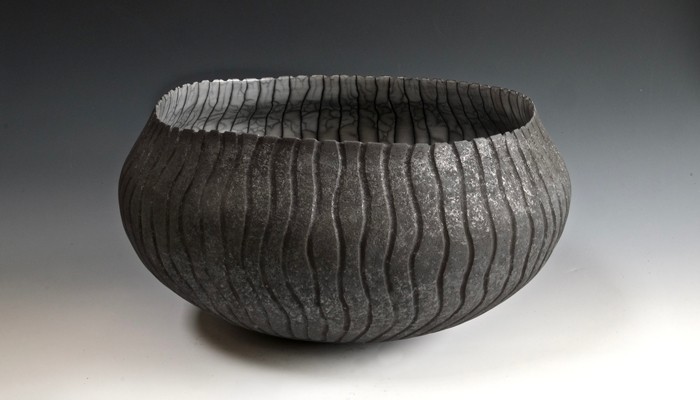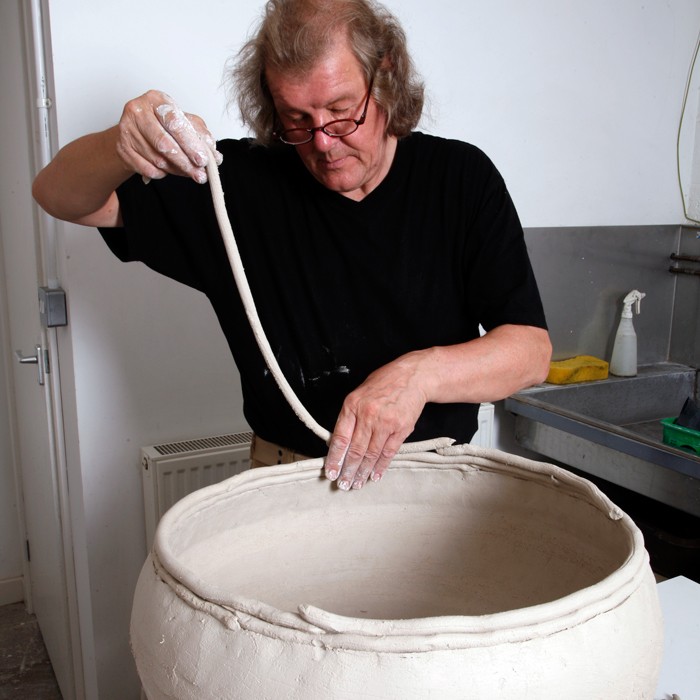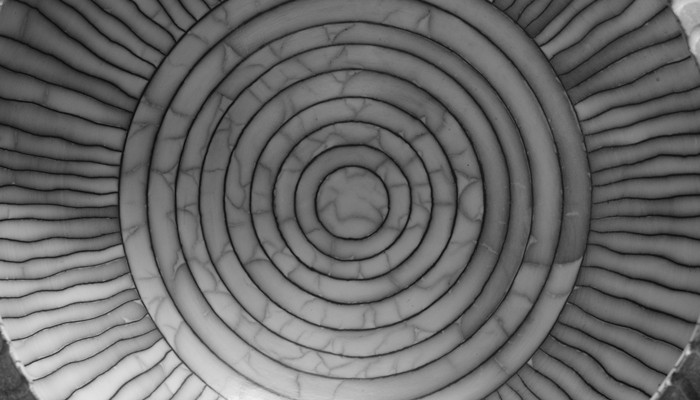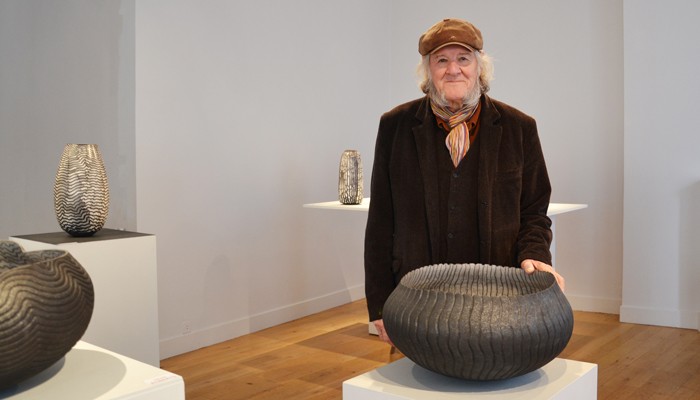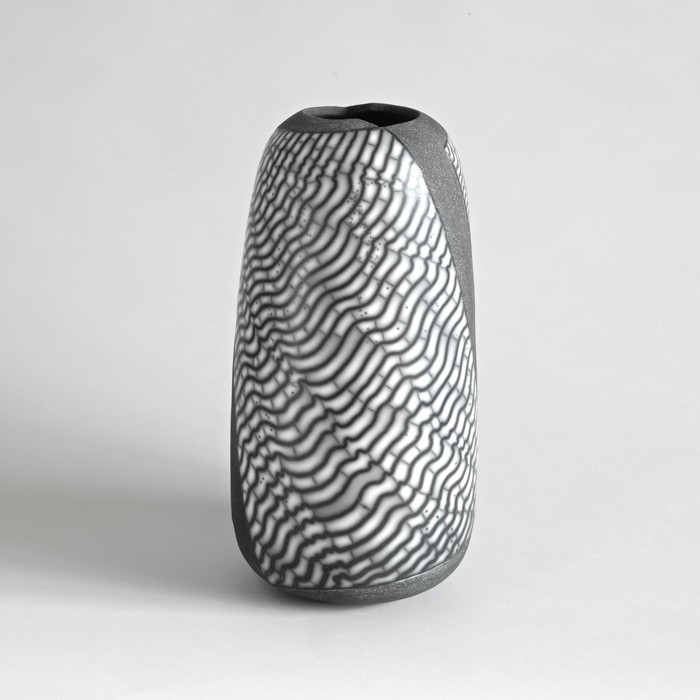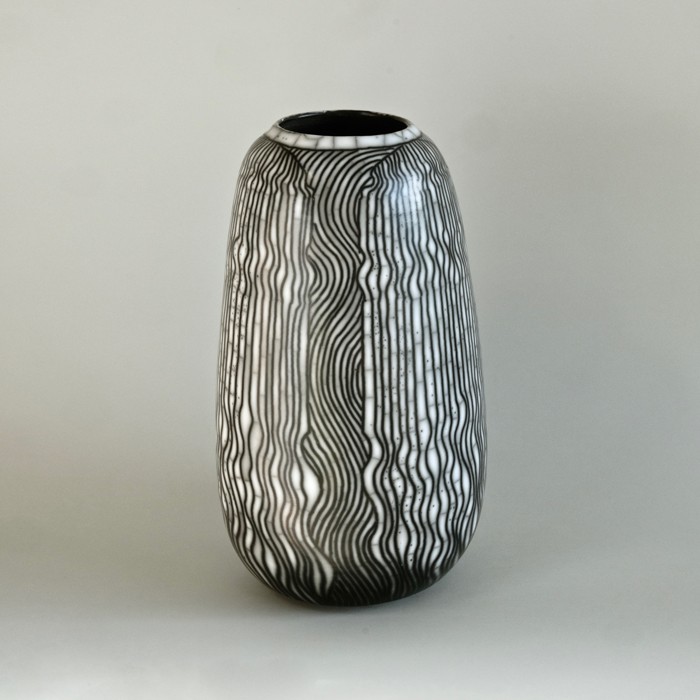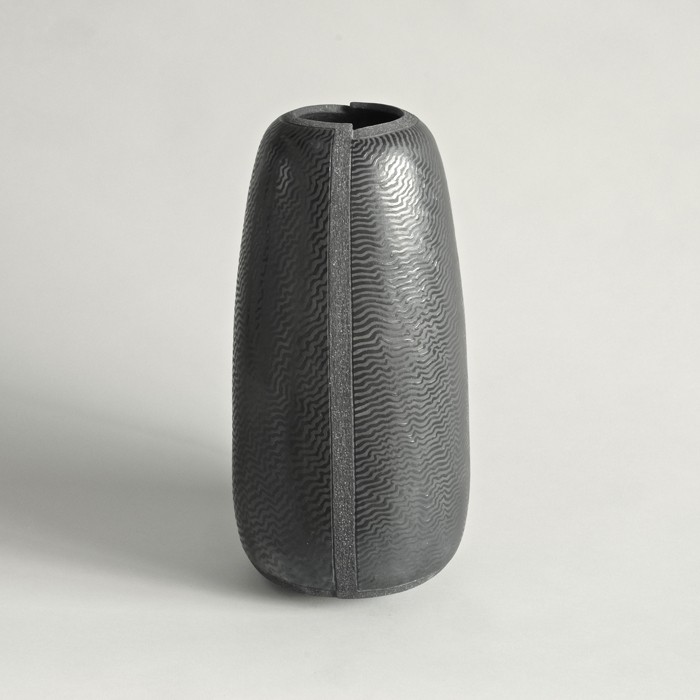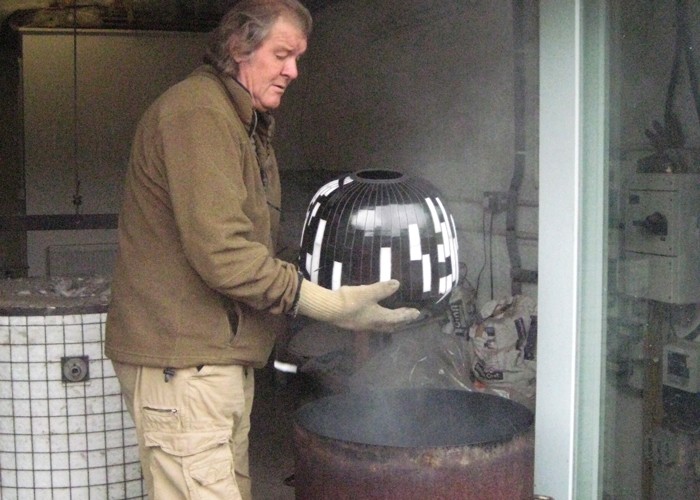Raku with David Roberts
During March we have taken the opportunity to discus ceramics and I hope that you have already enjoyed watching our first materials short documentary on ceramics.
In this article we will look at the ceramic technique of Raku, a Japanese lead-glazed pottery which is traditionally used in tea ceremonies based around the preparation of green tea. We speak with internationally renowned ceramicist David Roberts about his experience and his direct impact on the contemporary use of this process.
Raku was originally invented in the 16th Century by a potter named Chojiro who was commissioned to create vessels for a tea ceremony by Zen Tea Master Sen Rikyu.
Traditionally one of Raku’s distinguishing characteristics is that it is hand-shaped, rather than thrown on a wheel, this uniqueness ensures that each piece displays the individuality of the creator. The formed clay is placed in a hot kiln for about one hour and then removed and forced to cool rapidly at air temperature. The process subjects the pottery to extreme stress and creates unique effects throughout the glaze. Chance and process are the key elements of the Raku aesthetic.
Raku techniques have been modified over the years, particularly by western potters after Raku became popular in the US in the 1950s. Ceramicist Paul Soldner (1921-2011), a Californian ceramic artist noted for his experimentation, described American Raku to Ceramic Review:
‘American-style raku differs in a number of ways, notably the rich black surface produced by smoking the ware outside the kiln at the end of firing. Other innovations include the quenching of the red-hot vessel in cold water, the production of brilliant and many-colored copper lustres, the forced crackling of the glaze with smoke penetration, the white line halo or ghost image surrounding a black metallic decoration, and the discovery of a copper slip that sometimes results in an unusual yellow matte surface. American raku also utilized shapes other than the traditional tea bowl. Because the tea ceremony itself was never part of American raku, American potters could be more experimental and inventive in making raku than their Japanese counterparts.’
When using Western techniques the clay is placed on top of combustible material in a sealed combustion chamber prior to rapid cooling. The reduction atmosphere imparts unique metallic or black crackle effects to the clay using methods including wax resist, crackle glazes, copper glazes, naked Raku and horse hair. The piece is then carefully submerged in water to cool and prevent re-oxidation.
I was extremely honoured when David Roberts, one of the most significant ceramic artists working in Europe today, agreed to speak to Design Insider about his experience and expertise of working in Raku.
David Roberts is a distinguished English potter, he has an international reputation as a leading practitioner in Raku ceramics and is acknowledged as responsible for the introduction and promotion of modern, large scale Raku in Europe. David has also been instrumental in its re-introduction to the United States of America, where his example has played a key role in the foundation of the ‘Naked Raku’ movement which he discusses below. In his personal exploration of this traditional technique, Roberts has transformed it into a vibrant and contemporary art form. His work is represented in public and private collections throughout the world. You can find more information about David and his work through Contemporary Applied Arts.
What drew you to using the Raku process?
My initial encounter with Raku firing was during my time at college in the 1960s – it was not promising – black, rough, under fired objects with the appearance of burnt toast. So I continued with making high fired ceramics until I met a potter from the USA who introduced me to the American approach to Raku, he also introduced me to the work of other American Raku potters. I was bowled over by the colour, scale, control and contemporary nature of the work so I decided to give Raku another go.
This time I was hooked – I loved the physical engagement during the firing process and, with experience, the surprising amount of control you could exercise. In addition to this because of the low fired nature of the work my forms did not slump, shrink or distort as in a high temperature stoneware firing. Most of all, much to my surprise and delight the rich Raku glazes suited my simple, coil built, vessel oriented forms. From 1974 until now I have never made another stoneware piece.
Why has the process of Raku lasted the test of time?
In my view Raku has lasted the test of time for several reasons:-
As I experience when introduced to Raku it is a very approachable ceramic process – because of the low firing temperatures its technology is simple and the equipment very affordable compared to the cost of a stoneware kiln for example. Modern insulation materials have also made Raku kiln construction cheaper and therefore available to more people. Also because of the relatively low temperature firing it is ecologically less damaging and also running costs are less than conventional firings. Big kiln chambers are easily constructed thus the making of much larger pieces than found in traditional Raku is now possible – with care!
Unlike 40 or 50 years ago, contemporary ceramics and its audience are not obsessed by practicality. The fact that Raku ware is porous and not really utilitarian is not now an issue. It is ART. My Raku pieces for example can be seen and purchased in many very high quality galleries such as Contemporary Applied Arts in London.
For the above reasons, although used by professional potters, Raku has proved very popular with amateur potters and those just introduced to clay. It is also a very quick firing process which fits in with some people’s modern, hectic like styles.
Because of the chance element, physical involvement and the unique surfaces found in Raku it is a corrective to the controlled, rational and sedentary nature of modern life. I have experienced this from comments made by people when participating in my Raku workshops.
Raku is also a dynamic processes over the years constantly evolving and responding to individual aesthetic demands – see below.
In what ways has the Raku process evolved?
Raku originally involved the production of small, austere, vessels in the late 16th century for the Japanese tea ceremony associated with the Shogunate, Zen Buddism and samurai culture. Thus it stayed until the mid 20th century when the Americans (via the British potter Bernard Leach) and as part of the alternative, ‘hippie’ culture, got hold of it, introduced post firing reduction, modern glaze materials and kiln technology. This opened up and transformed a process trapped for centuries in the production of traditional, albeit beautiful, small tea bowls into a modern, vibrant and evolving art form with wider and a more individual range of forms, colours, textures and scale.
The evolution of Raku continued in the early 1990s. Several potters in America, Holland and including myself in the UK began independently to investigate the possibilities of non glazed Raku surfaces. It is described variously as ‘Smoke Stencilled Raku,’ ‘Raku Pelee’, ‘Naked Raku’ and ‘Painting with Smoke’. Essentially this form of Raku involves using various combinations of slips and glazes to control smoke markings and patterns. After the Raku firing the slips and/or glazes are removed revealing rich, graphic smoke patterns penetrating the clay surface. I have devoted myself soley to this type of Raku since 1989/1990 exhibiting my work all over the world.
Raku continues to morph and transform and is now being used by young artists in figurative and conceptual work, multiples, installations etc.
What do you love about Raku?
I have been involved with Raku for 40 years without becoming bored. Because of its open, dynamic nature it enables my work to constantly evolve. I am fascinated by the surface graphics I can obtain and I am very comfortable with having to rely on judgement in addition to measurement in the firing processes. I enjoy the physical involvement in the firing processes. It is not neutral, merely giving form to ideas rather it modifies, transmutes and suggests – and reveals itself in the finishes object – my work is about process as well as idea. Often after an exhibition opening I think perhaps thats it, time to move on from Raku something happens, reignites my curiosity and a new body of work begins. I love it!
Contact David Roberts
Contact Contemporary Applied Arts





